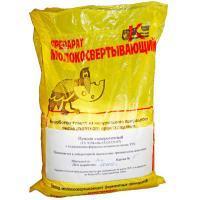Experts assessed the impact of the pandemic on living standards in the regions
The regions of Russia survived the covid crisis in different ways, and some of them did not have time to recover, having received a new blow from Western sanctions, follows from an article published in the latest issue of the journal All-Russian Research Institute of Labor, subordinate to the Ministry of Labor. The author of the scientific work, Sergey Smirnov, HEAD of the Center for Analysis of Social Programs and Risks at the Institute for Social Policy of the National Research University Higher School of Economics, compared the dynamics in the regions in three groups of indicators from Rosstat statistics: the general economic situation in the regions, the state of the labor market and household incomes, as well as the level of consumption.
The scientist compared annual data for the pre-pandemic year 2019 and 2021. In total, the analysis affected nine indicators, including the index of industrial production, the number of unemployed, retail trade turnover. Some of them managed to recover in most regions in two years, others did not. The only aspect in which not a single region succeeded was the debt of citizens on loans - it increased in all 85 regions. On average, according to the totality of all indicators, the socio-economic situation in 2021 relative to 2019 worsened in 49 regions and improved in 36.
Experts estimated the decline in the labor force in Russia by the end of the decade Economics
Where indicators recovered, and where they sank
The recovery from the 2020 economic downturn, when the tightest lockdowns were in place, has been uneven. If industrial production in the country as a whole grew by 2.2% in 2021 compared to 2019, then the volume of work performed in construction decreased by almost a quarter, Smirnov notes. 22 regions managed to significantly improve the results in industrial production, including in North Ossetia-Alania it grew by 81%, in Moscow - by 44%, in the Moscow region - by 28%. In 40 regions, the growth was small. And in 23 subjects there was a decline: the republics of Tyva and Ingushetia turned out to be outsiders - there production decreased by a third and more than 20%, respectively. As for construction, it has recovered to pre-pandemic levels in only six regions, most of all in Sevastopol (an increase of 2.3 times).
The dynamics of labor market indicators and the well-being of citizens turned out to be generally favorable, but heterogeneous in the interregional context, Smirnov notes. In some regions, incomes increased by 7–10% (Chukotka, Adygeya, Yamalo-Nenets Autonomous Okrug), while in Omsk, Tambov, and Sverdlovsk regions, on the contrary, they decreased by 8–9%. Despite the fact that in almost two-thirds of the regions the real incomes of the population did not recover, on average in the country they grew by 1% in 2021 compared to the pre-pandemic level.
Read on RBC Pro Pro How to write the perfect cover letter:12 steps Pro Article "I'm like a ninja in a street fight":Ray Dalio on the Impact of Meditation Articles Pro Tax Controversy:what to pay attention to right now Pro cases Eight ways to ruin a vacation and how to prevent itPro How Xi Jinping's policies are affecting the Chinese stock market Articles Pro Loves cola and hates sports:how the anti-life Elon Musk lives Articles Pro I will help you move:how companies are currently motivating IT professionals Instructions Pro Marketusa is falling. It's time to "buy the bottom" or it's ahead - expert opinions Forecasts
Given the outwardly relatively favorable situation with the monetary incomes of the population, families did not have enough money, in connection with which they used credit resources, the author of the article notes. Debt on loans in rubles of individuals by the end of 2021 compared to the end of 2019 in the country as a whole increased by almost 40%, and this is without taking into account debt on microcredits (attracted from microfinance organizations, MFIs). In the regional context, the “fork” of the values of this indicator varies greatly. If the residents of Mordovia increased their debt by 24%, then in Sevastopol the figure increased by 2.2 times (however, this region, along with Crimea and the North Caucasian republics, lags behind other Russian regions in terms of the level of penetration of lending to the population). The statistics did not reveal a single region where the level of debt would have decreased.
Experts named the most vulnerable regions in the sanctions crisis Economics
Most of the regions (46) also failed to reduce the number of unemployed, which rose sharply during the economic downturn at the beginning of the pandemic. The worst situation is in the Republic of Tyva, Sevastopol, Crimea, Novosibirsk region - the number of unemployed here has approximately doubled.
At the same time, over the two years of the pandemic, the need for employees in companies has increased in almost all regions. Among the nine subjects where this did not happen was Moscow. In the capital, the number of vacancies decreased by 13%. “This may be due to the peculiarities of the labor market in the city, for example, with its restructuring in favor of courier services that became widespread in 2020-2021, the transition to remote employment and a reduction in the need for staff serving office premises,” Smirnov explains.
An important indicator of the socio-economic development of regions is consumption, and here only retail trade turnover showed positive dynamics in the all-Russian context. In 60 regions it increased by 2.9% (the leaders are Adygea and the Leningrad region), and decreased by 25 (a noticeable decrease in the Tambov, Sverdlovsk and Omsk regions). The situation with the volume of paid services of the population and the turnover of public catering is fundamentally different - in most regions there is a decline.
Experts assessed the long-term effect of sanctions on the Russian economy Economics
How will the affected regions handle the sanctions crisis?
To get through the sanctions crisis, which replaced the pandemic crisis, the state will have to assess the damage to the economies of the regions, follows from the scientific work. According to Smirnov, the regions whose economy was less integrated into international value chains, and whose products were consumed mainly domestically, will suffer the least.
Extrapolating the indicators by which the damage of the pandemic to the regions was assessed to forecasts on the impact of the sanctions crisis, industrial regions may be at risk in terms of general economic aspects, which will not be able to replace foreign components for their enterprises, says Elena Anisimova, head of the ACRA regional ratings group.
“This applies to regions where enterprises operate, the sales market of which was largely unfriendly countries. As an example, we can talk about the Vologda Oblast, whose economy is largely dependent on Severstal (its shareholder fell under sanctions , and the company had problems exporting products. - Which is making efforts to diversify sales markets, ”explains the expert. In Among such regions, she notes the Kemerovo region, which is actively looking for sales markets, but is limited in its ability to transport coal.
The effect on household income and consumption levels may be significant for regions with low rates of socio-economic development, Anisimova continues, citing Mordovia, the Trans-Baikal Territory, Ivanovo and Kirov regions as examples. “In such entities, budget revenues from personal income tax are often higher than from income tax. If the incomes of the population fall, this will entail a decrease in such indicators as the turnover of public catering, the provision of paid services and the turnover of retail trade. Given the high share of local employment in these industries, the negative effect will be noticeable,” she said.
One of the main differences between the covid crisis and the sanctions one is that the pandemic turned out to be short-term, while the sanctions were long-term. “If recovery after the pandemic did not require structural restructuring of the economy, then under long-term sanctions, recovery will require such a systemic process,” the ACRA expert emphasizes. The development of strategies for restructuring the economy of specific regions, aimed at maintaining their socio-economic stability, is what the authorities and researchers will have to do in the near future, concludes Smirnov.



























































